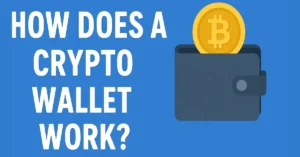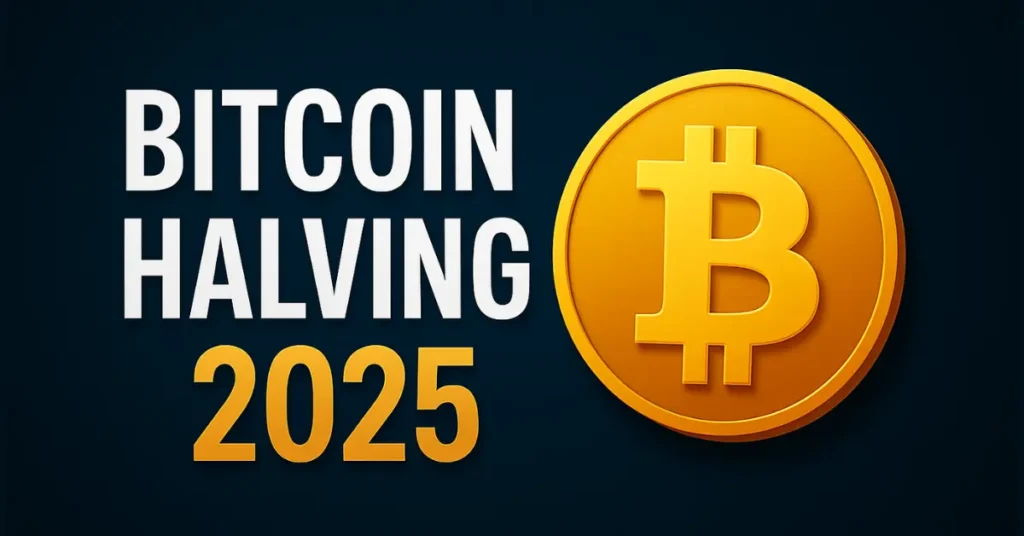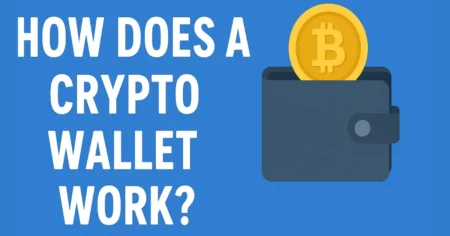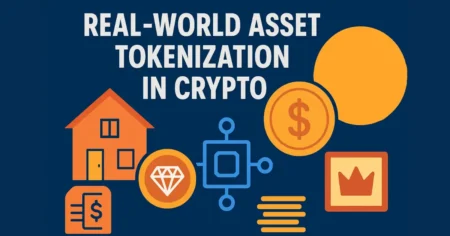Bitcoin Halving 2025
Introduction to Bitcoin Halving
When people first hear about Bitcoin halving, it sounds a little confusing. The word “halving” literally means cutting something in half, and that’s exactly what happens here. Every four years, the rewards that Bitcoin miners earn for validating transactions get cut by 50%. It’s built into the very code of Bitcoin and can’t be changed by anyone. This is what makes Bitcoin different from traditional currencies: no central bank can decide to print more whenever it wants.
Bitcoin halvings occur about once every 210,000 blocks, which roughly equals four years. Since its launch in 2009, Bitcoin has already gone through three halving events. Each time, the amount of new Bitcoin entering the market decreased, which many experts believe has played a role in pushing its price higher over time.
Think of it like a supply and demand story. If supply goes down but demand stays the same—or even increases—then the value of that asset usually rises. That’s why halvings attract so much attention, not just from Bitcoin enthusiasts but also from Wall Street investors, media outlets, and even governments.
The upcoming 2025 halving is expected to be one of the most closely watched financial events of the decade. As Bitcoin matures and becomes more widely adopted, the impact of this halving could be even bigger than the previous ones. To understand why, we need to look at how the process actually works and what history tells us.
The Mechanics of Bitcoin Halving
To understand why halvings matter, you first need to know how Bitcoin mining works. Bitcoin is secured by a system called Proof-of-Work. Miners use powerful computers to solve complex mathematical puzzles. When they solve one, they validate a block of transactions and add it to the blockchain. For their efforts, miners are rewarded with newly created Bitcoin, called the block reward.
When Bitcoin launched in 2009, the block reward was 50 BTC per block. After the first halving in 2012, it dropped to 25 BTC. Then it halved again in 2016 to 12.5 BTC. In 2020, it dropped once more to 6.25 BTC. In 2025, the reward will fall to 3.125 BTC.
This schedule is set in stone and coded into Bitcoin itself. No government, company, or group of people can change it. That’s what makes halvings so predictable. We know the exact block height at which the reward will shrink, even if the precise date may shift slightly depending on how quickly blocks are mined.
Every halving makes Bitcoin scarcer. Unlike the dollar, which can be printed endlessly, Bitcoin’s maximum supply is capped at 21 million. By reducing the rate at which new coins are created, halvings slow down the approach toward that cap. This scarcity is often compared to precious metals like gold, where mining gets harder over time, making the asset more valuable.
But the halving doesn’t just affect scarcity. It also directly impacts miners. Their rewards are cut in half overnight, but their costs—like electricity and hardware—remain the same. This creates pressure on mining operations, especially smaller ones, to stay profitable. The result is a constant cycle of innovation in mining technology and efficiency.
Historical Impact of Previous Bitcoin Halvings
History doesn’t always repeat itself, but it often rhymes. Looking back at Bitcoin’s past halvings gives us a clue about what might happen in 2025.
The first halving took place in November 2012. At that time, Bitcoin was still relatively unknown, trading at around $12. Within a year, it skyrocketed to over $1,000. That kind of growth shocked even the most optimistic early adopters.
The second halving in July 2016 came when Bitcoin was already more established. Prices hovered around $650 at the time of the halving, and by the end of 2017, Bitcoin hit nearly $20,000. This was the first time mainstream media started covering Bitcoin as a serious financial asset.
The third halving in May 2020 happened under very different circumstances. The world was in the middle of a pandemic, governments were printing money at historic levels, and many investors were looking for alternatives to traditional markets. Bitcoin was around $8,700 at the time of the halving. By late 2021, it had soared to nearly $69,000, setting an all-time high.
While each halving has led to significant long-term price increases, it’s important to note that the gains didn’t happen overnight. In fact, right after a halving, Bitcoin often experiences volatility, with periods of sideways trading before major bull runs. This pattern shows that halvings act as a catalyst, but other factors—such as global economic conditions, institutional adoption, and technological developments—also play a key role.
What to Expect from the 2025 Bitcoin Halving
So, what makes 2025 different? For starters, Bitcoin is no longer just an experiment or a niche investment. It has become a trillion-dollar asset class with institutional investors, ETFs, and even some governments paying attention. The halving in 2025 will reduce the block reward from 6.25 BTC to 3.125 BTC. That’s a big cut, especially for miners, but it also means new supply entering the market will drop significantly.
Some analysts believe this scarcity could trigger another bull run, similar to past cycles. Others argue that because the halving is predictable, the market has already priced it in. Both perspectives have merit. In reality, the halving creates a narrative that fuels investor interest. Whether or not it immediately drives the price higher, it certainly shifts how people view Bitcoin’s long-term value.
The key difference in 2025 is the level of adoption. In the past, halvings were mainly followed by retail investors and early adopters. This time, large institutions, hedge funds, and even retirement accounts are in play. If demand increases even slightly while supply is being cut, the effect on price could be dramatic.
Of course, there are risks. The global economy in 2025 will also play a huge role. If interest rates are high or markets are unstable, investors may be cautious. On the other hand, if inflation remains a concern, Bitcoin’s scarcity could make it even more attractive as a hedge.
Economic and Market Implications of Bitcoin Halving
At its core, Bitcoin halving is about supply and demand. By reducing the rate of new supply, halvings create scarcity. Scarcity often leads to higher value, but it’s not the only factor at play. Investor psychology is just as important.
When halvings occur, they create excitement and anticipation. Investors start asking: “Will this be the start of another bull run?” This sentiment often brings new people into the market. That increased demand, combined with reduced supply, can drive prices higher.
But there’s another side to the story. Global economic conditions matter. For example, during the 2020 halving, governments were pumping trillions into the economy. That fueled interest in Bitcoin as an alternative store of value. If the world in 2025 is facing recession, inflation, or currency instability, Bitcoin could once again benefit as people look for safe-haven assets.
There’s also a growing institutional presence. Companies like BlackRock and Fidelity have already launched Bitcoin-related investment products. As more institutions add Bitcoin exposure to their portfolios, halvings become even more significant because the market dynamics shift from retail speculation to large-scale investment flows.
Ultimately, the economic and market implications of the 2025 halving will depend on three factors: how demand reacts, how miners adapt, and how global economic conditions evolve.
How Bitcoin Halving Affects Miners
Bitcoin miners sit at the heart of the halving conversation. They are the ones who secure the network and, in return, receive rewards for their work. But every four years, their income gets slashed in half, while their operating costs—electricity, hardware, and maintenance—stay the same. This creates a constant challenge for miners to adapt and survive in a competitive environment.
Before a halving, many miners prepare by upgrading their hardware to more energy-efficient machines. Newer mining rigs can perform more calculations with less power, which helps offset the reduction in rewards. For large mining farms, efficiency is everything. The 2025 halving will reduce the block reward to 3.125 BTC, which means only the most efficient miners will remain profitable if Bitcoin’s price does not rise significantly.
Some smaller mining operations may be forced out of the market because they cannot compete on cost. This process, often called “miner capitulation,” happens when weaker players shut down their rigs, and only those with access to cheap electricity or state-of-the-art hardware survive. While this may sound negative, it actually strengthens the network in the long run because it consolidates mining power among the most resilient operators.
Interestingly, halvings also push innovation in the mining industry. Over the past decade, we’ve seen massive improvements in mining chips, cooling technology, and even the use of renewable energy. The need to cut costs drives miners to explore cleaner and cheaper energy sources, which also helps counter some of the criticism around Bitcoin’s environmental impact.
The halving is not just about rewards—it’s also about the network’s security. Since miners are compensated less in BTC, they rely more on transaction fees to stay profitable. Over time, as halvings continue, fees will play a bigger role in sustaining the system. This gradual shift was part of Bitcoin’s design from the very beginning.
In short, the 2025 halving will put miners under pressure, but it will also push the industry toward greater efficiency and innovation. Those who can adapt will thrive, while those who cannot will step aside.
How Investors Can Prepare for the 2025 Halving
For investors, the halving is both a risk and an opportunity. It’s a reminder that Bitcoin is not like traditional investments—it follows its own rhythm, shaped by its code. So, how can investors in the United States and beyond prepare for the 2025 event?
One strategy that many long-term investors use is simply holding. Known in crypto circles as “HODLing,” this approach means buying Bitcoin and keeping it for years, regardless of short-term price swings. History shows that halvings have always been followed by long-term price appreciation, although with plenty of volatility along the way.
Another popular method is dollar-cost averaging (DCA). This involves buying small amounts of Bitcoin at regular intervals, such as weekly or monthly, regardless of the price. Over time, this reduces the risk of buying at a peak and allows investors to benefit from the average market price. For those who don’t want to constantly time the market, DCA is a straightforward and stress-free approach.
But preparation is not just about buying. Risk management is just as important. Bitcoin is known for wild price swings, and no halving guarantees profits. Smart investors only allocate a portion of their portfolio to Bitcoin, balancing it with other assets like stocks, bonds, or real estate. This diversification helps cushion against potential downturns.
It’s also wise to stay informed. In the months leading up to the halving, misinformation and hype tend to flood the market. Some analysts will call for sky-high prices, while others predict doom. The truth usually lies somewhere in between. Following credible sources and avoiding impulsive decisions is key.
Finally, investors should remember that timing is not everything. Many people who tried to “buy the dip” or “sell the top” ended up missing out. Instead, having a clear plan and sticking to it often works better. The halving is a long-term event—it may not cause immediate fireworks, but its effects play out over years.
Comparing Bitcoin Halving to Other Assets
To fully appreciate Bitcoin halving, it helps to compare it with traditional assets. Take gold, for example. Gold is valuable because it’s scarce and difficult to mine. The supply of new gold increases slowly, and over time, it gets harder to extract. That scarcity has helped gold maintain value for centuries. Bitcoin works in a similar way but with a twist: its scarcity is programmed and predictable.
Unlike gold or oil, no new Bitcoin deposits can be discovered. We know there will only ever be 21 million coins, and we know exactly when the new supply rate will decrease. That predictability sets Bitcoin apart from every other asset in history. Halvings are essentially Bitcoin’s version of a “monetary policy,” but one that is fixed and immune to political decisions.
When compared to traditional currencies, the contrast is even sharper. Central banks can print as much money as they want, often leading to inflation and devaluation. Bitcoin, on the other hand, becomes scarcer with time. For investors worried about the long-term erosion of dollar purchasing power, this difference is one of the main attractions of Bitcoin.
Another interesting comparison is with stocks. Companies sometimes perform stock splits, where they increase the number of shares but keep the total value the same. Halving is the opposite—it reduces the “issuance” of new coins. That shrinking supply curve is unique to digital assets and is a big reason why halvings are such a central event in Bitcoin’s lifecycle.
In short, Bitcoin halving is not just a crypto curiosity. It represents a fundamental shift in how value can be structured and preserved in a digital age. Understanding this difference helps investors see why each halving is more than just a technical milestone—it’s a financial revolution.
Common Myths About Bitcoin Halving
With so much attention on halvings, it’s no surprise that myths and misunderstandings spread easily. Let’s clear up a few of the most common ones.
Myth 1: Halving guarantees higher prices.
While past halvings have been followed by major bull runs, it’s not a certainty. Prices are influenced by many factors, including demand, global markets, and investor behavior. The halving creates scarcity, but it doesn’t automatically push the price higher.
Myth 2: Halving makes mining obsolete.
Some believe miners will give up because rewards are cut in half. In reality, miners adapt. They upgrade equipment, seek cheaper energy, and rely more on transaction fees. The network remains secure because mining incentives still exist, even if they evolve.
Myth 3: Halving is only relevant to miners.
While miners feel the direct impact of reduced rewards, the ripple effect spreads across the entire market. Investors, institutions, and even governments pay attention to halvings because of their influence on supply and demand.
Myth 4: Halving is unpredictable.
Actually, halvings are among the most predictable events in finance. The exact block height is known years in advance. What’s unpredictable is how the market will react to it.
Dispelling these myths is important because they often drive irrational behavior. Some investors panic, while others get overly excited. The truth lies in understanding that halving is one piece of a larger puzzle that defines Bitcoin’s future.
The Global Adoption of Bitcoin Post-Halving
Each Bitcoin halving has not only affected price and mining but also shaped how the world views and adopts Bitcoin. After the 2012 and 2016 halvings, interest grew mostly among tech enthusiasts and retail investors. But the 2020 halving happened at a time when institutions were entering the scene, and governments began taking notice. The 2025 halving will unfold in an even more mature environment, where Bitcoin is no longer a fringe experiment but a recognized financial asset.
Institutional adoption has accelerated. Major financial players like BlackRock, Fidelity, and other asset managers are building investment products that allow traditional investors to gain Bitcoin exposure. Exchange-traded funds (ETFs) in the United States have opened the door for retirement accounts and mutual funds to allocate Bitcoin alongside stocks and bonds. This is a massive shift from the earlier days when investors had to set up crypto wallets and navigate unfamiliar exchanges.
Governments are also playing a bigger role. Some countries are embracing Bitcoin as part of their financial system, while others are crafting strict regulations to control its use. In the United States, the stance is evolving: while regulators continue to debate, the fact that large firms can legally offer Bitcoin investment products shows that the asset is being taken seriously. Each halving strengthens this narrative of Bitcoin as “digital gold” and reinforces its position in global markets.
Public perception is another important factor. For many everyday people, halvings serve as a reminder that Bitcoin is different from the dollar or any other currency. The concept of scarcity is easy to grasp: fewer coins coming into circulation make Bitcoin more valuable over time. As awareness grows, adoption follows, whether through direct investment or through services that integrate Bitcoin as a payment method.
By 2025, Bitcoin’s halving won’t just be a crypto event—it will be a financial event with global attention. The cycle of scarcity and demand could accelerate Bitcoin’s integration into the mainstream economy.
The Role of Media and Public Hype During Halving Cycles
Every Bitcoin halving comes with a surge of media attention. Traditional news outlets, financial networks, and social platforms all amplify the event. This coverage plays a huge role in shaping how the public and investors respond.
On social media platforms like Twitter (X), Reddit, and YouTube, crypto influencers and analysts often spark conversations about potential price movements. Sometimes this hype can lead to unrealistic expectations. For example, in past cycles, you would find endless posts predicting Bitcoin would skyrocket to specific price targets immediately after halving. While these predictions grab attention, they rarely capture the full picture.
Mainstream news networks also cover halvings, but their narratives tend to focus on dramatic price swings, regulatory debates, or environmental concerns. While some of this coverage brings valuable insights, it can also create fear or euphoria among investors who are not deeply familiar with Bitcoin.
The media’s role cannot be underestimated. New investors often enter the market during hype cycles, motivated by headlines and viral posts rather than deep research. This influx of inexperienced buyers can increase volatility, as people buy during peaks or sell in panic when prices dip.
At the same time, media coverage helps drive education. More articles, interviews, and podcasts introduce Bitcoin to a wider audience. By 2025, with Bitcoin already a familiar name, the media will likely cover the halving with more nuance. Still, the combination of excitement, speculation, and hype will influence how both retail and institutional investors respond in the short term.
Risks and Challenges Post-2025 Halving
While halvings bring opportunities, they also come with risks and challenges. The first and most obvious is price volatility. Even though long-term trends have been positive, short-term market reactions can be unpredictable. Some halvings have been followed by immediate price rallies, while others saw sideways trading or even dips before major gains. Investors who expect instant results may be caught off guard.
Another challenge is network security and sustainability. As block rewards decrease, miners rely more on transaction fees. If transaction volumes do not increase, there’s concern that miner incentives could weaken, potentially reducing the security of the network. However, so far, Bitcoin’s transaction activity has continued to grow, which helps balance this risk.
Energy consumption also remains a hot topic. Bitcoin mining has often been criticized for its environmental impact. With rewards shrinking, miners are pressured to find cheaper and cleaner energy sources. While this trend is already underway, especially with renewable energy integration, debates over Bitcoin’s carbon footprint will likely intensify after 2025.
Finally, there’s the regulatory landscape. Governments around the world are still figuring out how to handle Bitcoin. Increased adoption and higher valuations may bring stricter oversight. For investors, this could mean more transparency but also more restrictions. The direction of regulation in the U.S. and Europe will play a key role in shaping Bitcoin’s post-halving environment.
In short, the 2025 halving will not eliminate uncertainty. It will highlight both the strengths and vulnerabilities of Bitcoin as it matures into a global financial asset.
Opportunities Beyond Bitcoin Halving
Although halvings attract most of the attention, the broader crypto ecosystem offers opportunities beyond Bitcoin. One area is altcoins. Many alternative cryptocurrencies tend to experience growth in the months after Bitcoin rallies, as investor money spreads across the market. Ethereum, for instance, plays a major role in decentralized finance (DeFi) and NFTs, areas that continue to evolve.
The blockchain technology powering Bitcoin also has applications beyond digital currency. From supply chain management to voting systems, industries are exploring how blockchain can improve efficiency and security. As Bitcoin halvings spotlight crypto, interest in these other applications often increases, too.
DeFi is another sector worth watching. By allowing users to lend, borrow, and trade without intermediaries, DeFi represents a new frontier in finance. While it comes with risks, its growth potential is enormous, especially in a post-halving environment where attention is on digital assets.
Investors who understand these wider opportunities may benefit from diversifying their crypto exposure. While Bitcoin remains the centerpiece, the broader ecosystem is full of innovation that halvings help bring into the spotlight.
Expert Predictions and Insights for 2025 and Beyond
Every halving cycle sparks predictions, and 2025 is no different. Some analysts believe Bitcoin could reach new all-time highs, fueled by institutional adoption and limited supply. Others caution that expectations are too high and that external factors, such as global economic instability, could dampen growth.
Financial experts often point out that while halvings create scarcity, demand is the real driver of price. If demand grows, scarcity magnifies the effect. If demand weakens, the halving’s impact is limited. Economists warn against assuming that history will repeat exactly, reminding investors that markets evolve.
One common theme among experts is caution. Predictions can be exciting, but they are never certain. The best approach, they argue, is to treat Bitcoin as a long-term investment rather than a short-term bet. Whether the price doubles, triples, or dips in 2025, the bigger story is Bitcoin’s continued journey toward mainstream adoption.
Conclusion: The Bigger Picture of Bitcoin Halving 2025
The 2025 Bitcoin halving is more than just a reduction in mining rewards—it’s a milestone in the evolution of digital money. It represents scarcity, innovation, and the global conversation about the future of finance. History shows that halvings have pushed Bitcoin into new levels of adoption and value, but the road is never smooth.
For miners, the halving brings challenges and opportunities to innovate. For investors, it offers both risks and rewards, depending on preparation and strategy. For the world, it’s another reminder that Bitcoin is not going away. Its design, rooted in transparency and scarcity, makes it one of the most unique assets ever created.
As 2025 approaches, the best mindset is long-term. Whether the halving sparks another bull run or leads to a period of consolidation, the bigger picture is clear: Bitcoin is rewriting the rules of money.
FAQs
Q1: What exactly happens during a Bitcoin halving?
A Bitcoin halving reduces the block reward miners receive by 50%, making new Bitcoin scarcer. In 2025, the reward will drop from 6.25 BTC to 3.125 BTC.
Q2: Does Bitcoin always rise in price after a halving?
Not immediately. While history shows long-term price growth after halvings, short-term reactions can vary. Other factors, such as global economic conditions, also influence the price.
Q3: How does halving affect miners?
Miners earn less Bitcoin per block, so they must improve efficiency, cut costs, or rely more on transaction fees to stay profitable. Some smaller miners may exit the market.
Q4: Should I buy Bitcoin before or after the 2025 halving?
There’s no perfect timing. Many investors prefer dollar-cost averaging—buying small amounts regularly—to reduce the risk of market timing.
Q5: Is Bitcoin halving similar to stock splits?
Not at all. Stock splits increase the number of shares without changing scarcity. Bitcoin halving reduces the issuance of new coins, making it scarcer over time.
Also, read
- What is a crypto wallet, and how does it work? – Coinsify
- 10 Crypto Terms Every Beginner Must Know: Coinsify
- What is blockchain technology? Complete Guide – Coinsify
- How to Buy Crypto Safely in 2025: Complete Guide – Coinsify
- Bitcoin vs Ethereum: Key Differences Explained: Complete Guide
- Ultimate Blockchain Glossary: Learn Blockchain Terms Easily
- How to Buy Bitcoin Safely (Complete Beginner’s Guide)
- Top 10 Crypto Wallets for Beginners (2025 Edition)
- What is cryptocurrency? A Beginner-Friendly Guide (2025)






